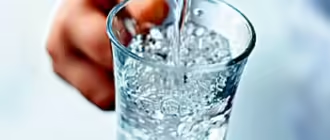Creatine has shaken the market and nutritional science the most in recent years, although it is not new. Interestingly, the first mention of creatine and its connection with muscle mass dates back to the twenties. European athletes began to use creatine (its use was first recorded by English athletes at the 1992 Olympic Games). Then he reached American shores.
Creatine is an amino acid , the derivative of which is formed in the liver, kidneys, and pancreas from the amino acids arginine, glycine and methionine. We also get it from food. Red meat is one of the best natural sources of creatine. However, to get four grams of creatine from food, you must eat more than two kilograms of beef. This is why taking a creatine supplement to achieve progress.
The mechanism of action behind creatine is highly similar to glycogen loading, which is commonly used by runners to improve performance. Both methods store energy in skeletal muscles. Runners use glycogen to enhance aerobic energy production. Strength athletes require a different type of energy called ATP (adesine triphosphate), which powers the brief, intense muscle contractions that occur during weight lifting.
Muscles have the ability to store more creatine than the body requires or consumes from the normal diet. Athletes can take advantage of this by essentially packing their muscles with creatine. By having an extended supply of creatine, you can replenish ATP to a significant extent. More creatine means a longer, more intense workout. The result is greater muscle load, subsequently increasing hypertrophy (i.e. you become bigger).
From a practical point of view, from a health point of view, staying on creatine all year round is not recommended. Creatine should be cycled, its intake coinciding with periods of intense training.
For example, your goal is 4 kilograms of high-quality mass in six months. After creating a heavy weight training program, you should increase your food intake and start taking creatine. Heavy weights, increased intake of protein , carbohydrates and total calories, plus loading with creatine, will put your body into growth mode. Pay attention not only to nutritional factors during the growth phase, but also to the amount of rest: increase the duration of sleep to 10 hours at a minimum (eight hours of sleep at night and a nap during the day). This ensures maximum muscle recovery and regeneration of ATP reserves.
What makes creatine anabolic?
Interestingly, creatine improves performance in several ways. Ask some of the guys at the gym and they’ll tell you that creatine works by hydrating your muscles. True, but that’s only part of the story.
The main effect of creatine is its ability to release phosphate to regenerate ATP from ADP (adesine diphosphate). It also acts as a proton buffer, i.e. keeps the pH balance (acid) of the muscles from scattering. Towards the end of the set, the pH levels in your muscles change, causing you to experience a burning sensation and, ultimately, fatigue. By keeping your pH stable, you delay fatigue by delaying the burning sensation.
Creatine also protects against a decrease in glycolytic activity (the biochemical process that produces ATP from sugar) in muscles. If you can increase or maintain glycolysis, you can release more ATP for intense muscle contractions.
Creatine may also direct an anabolic effect in muscle through two other mechanisms. In the first, creatine may act as a signal to increase protein synthesis, along with muscle load. The second mechanism, returning back, fills the muscles with water. When you increase the hydration level of a cell, processes are launched. One of them is protein synthesis. Interestingly, glutamine and insulin also change cell volume.
Recent scientific evidence shows that creatine has two properties: 1) it affects ATP storage and 2) it directly increases protein synthesis through signals and cell enlargement.







